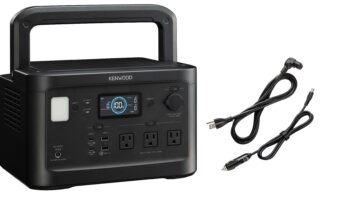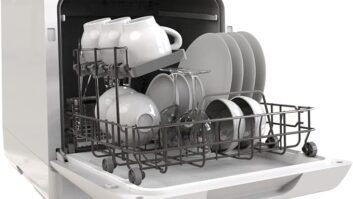When the going gets tough, as it certainly has in the current economic climate, the tough get going.
And when the tough get going, as arch-rival category killers Best Buy and Circuit City are now ramping up to do, everyone else had better duck.
With the economy stalled for the foreseeable future and consumers less inclined to part with their disposable income, the stakes have become that much greater in the high-overhead realm of big box retailing.
Set against that backdrop is the ever-sharper mass merchant competition. Among the discount crowd, Wal-Mart and Kmart are beefing up their CE selections and recommitting to Depression-level prices; the home improvement chains are knocking heads over majaps; and Sears is cutting its commitment to computers and analog electronics in pursuit of digital dollars.
In response, the Top Two CE chains have been busy laying the groundwork for what may be a bruising battle for market share come the fourth quarter, and a war of attrition beyond.
What follows is a strategic overview of their respective plans of attack. Given their concentration of CE firepower, the outcome is sure to reshape the retail landscape — and leave some casualties in its wake.
Best Buy
It’s been a busy year for the nation’s No. 1 CE chain as it embarked on a sweeping new strategy for the 21st century. The cornerstone of its game plan: the nearly three-quarters of a billion dollar buyout of the Musicland and Magnolia Hi-Fi chains.
But integrating the acquisitions won’t be easy. Best Buy anticipates losses during the first three quarters of its current fiscal year while it revamps Musicland’s stores and business practices, and as CD sales soften. Short-term plans include introducing the first wave of digital products into Sam Goody’s mix in time for the holidays, breaking a new autumn ad campaign for Suncoast and building up On Cue’s store count at a fevered pace.
The upside? If all goes as planned, Musicland should return to profitability by the fiscal fourth quarter, the company projects, and its earnings could offset the previous shortfalls.
Meanwhile, Magnolia, which was beset with flat first quarter sales related to the tech sector implosion in its Pacific Northwest base, stands to benefit from a five-year plan that will take it into upwards of 150 affluent markets. That growth will be concurrent with a Canadian expansion that could bring 65 Best Buy stores north of the border by 2005, with the first 15 slated to open in Toronto next year.
The company will also be busy opening flagship stores at home. Plans call for the addition of some 60 new units a year through 2005, when the chain becomes fully built out. One-third of new construction next year will consist of small market concept stores, with the balance comprised of the newest Concept 5 big box format. The design, which will debut this year in 25 percent of new locations, features a 45,000-square-foot footprint, improved product placement, faster checkout, better merchandising, and a shopper-friendly floor plan that promotes customer interaction with product displays.
Nor is the company sitting still in cyberspace. Last month it added a home office offering to its e-commerce web site, BestBuy.com, which includes phones, office accessories, furniture (ranging from computer desks to armoires) and even Samsonite luggage.
To manage the expansion — and establish a succession strategy — the company reconfigured its corporate structure by creating a centralized management tier called the Best Buy Enterprise, while giving senior execs Brad Anderson, Allen Lenzmeier and Wade Fenn new titles and broader responsibilities.
All told, the company appears well poised for future growth, and for fighting a multi-front campaign in the retail trenches.
Circuit City
So far, the new millennium has not been kind to Circuit City and its new CEO, which are smarting from a 25 percent comp store decline during the just ended fiscal first quarter.
The No. 2 CE chain attributes much of the carnage to its controversial decision to exit the major appliance category, which comprised 14 percent of sales during the year-ago period. Also impacting the business is the prolonged slowdown in sales of PCs, a core sector in Circuit City’s mix.
“We remain disappointed in the sales performance of our Circuit City stores,” conceded president and chief executive Alan McCollough. “The sales pace has varied significantly since this time last year, and so we are cautious in our outlook.”
But despite the gloomy sales story, McCollough can discern a silver lining courtesy of the Bill Gates brigade. “We believe that the introduction of the Windows XP operating system later this fall will help strengthen the sales pace in the home office business,” he said, “generating more computer sales and also allowing us to sell more peripherals and accessories related to home office.”
Meanwhile, within the broader CE sector, the company is continuing “to experience considerable strength in new technologies and in the new and expanded categories added into the former appliance space — virtually all of which carry higher profit margins,” McCollough reported. Indeed, the retailer has no regrets about last year’s appliance purge, given the ongoing weakness in white goods and the ferocious market share skirmishes between Lowe’s and Home Depot, he earlier told TWICE.
Beyond assortment, the chain has also taken a series of actions to shore up operations and help turn the tide. On the remodeling front, the company is testing two different approaches designed to revamp adjacencies, improve sight lines, widen aisles and replace signage more quickly and cheaply than previous efforts, which had disrupted foot traffic and cost as much as $2.5 million per unit.
The more extensive of the two approaches is currently underway in 10 stores within the Chicago market, McCollough said, while a second, less costly initiative is to begin shortly in the Washington/Baltimore area, covering 12 stores. “Both remodel efforts are on schedule, and costs in Chicago are consistent with our previously announced expectations of an average $1.5 million per store,” he said.
The remodels will come in addition to 15 to 20 new format stores that are expected to open this year.
At the same time, the company will begin sprucing up its exteriors with a cleaner looking logo, and has launched a new marketing campaign that’s built around the tagline “We’re with you.” The catchphrase reflects McCollough’s goal of becoming “the customer service leader in CE retailing,” which he plans to attain through stepped up employee training and by embracing the Six Sigma quality initiative ascribed to by GE.
Back end operations may also be improved with the implementation of a new supply chain software solution within its seven regional distribution centers. The program, Warehouse Advantage Suite by HighJump Software, is expected to improve customer service and streamline warehouse operations, which handle some 3.5 million packages per day.
Despite the initiatives, some analysts remain skeptical. Indeed, Dan Wewer, a senior analyst with Deutsche Banc Alex. Brown, suggests that Circuit City may have already lost the war, citing “concern that Circuit City is rapidly losing market share to Best Buy. This will exacerbate the challenge of turning around Circuit City’s declining sales and earnings trends, perhaps even after the company has successfully identified and implemented a remodeling program, as market share is so severely eroded,” he said.
Still, as one of the all-time great analysts — Yogi Berra — observed, it ain’t over ’til it’s over.










